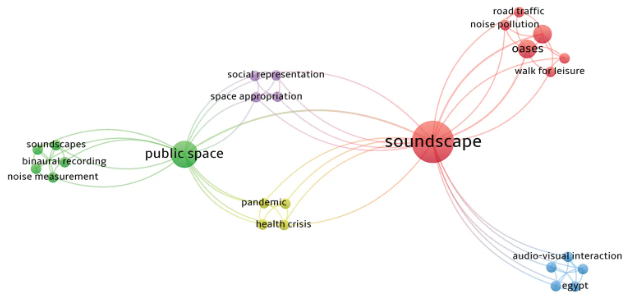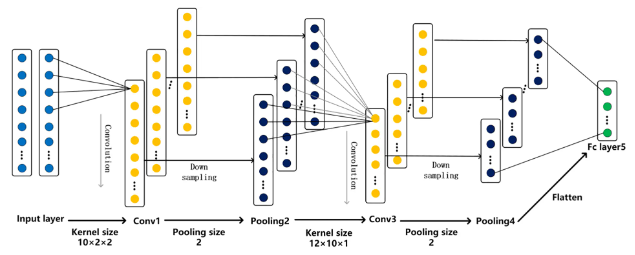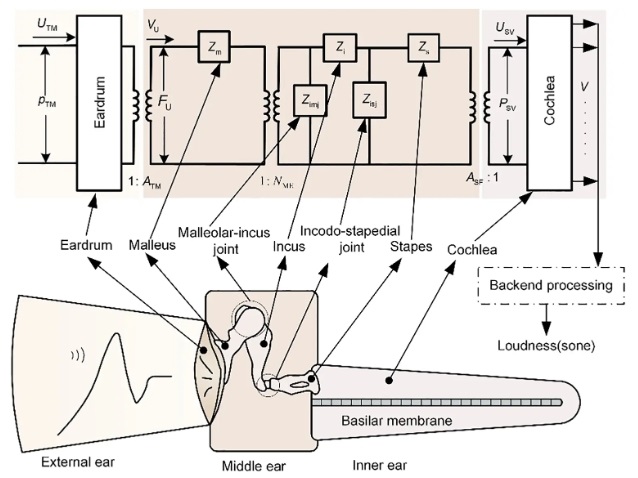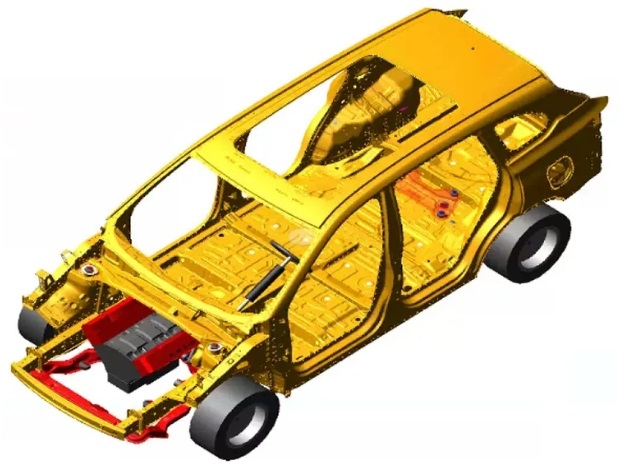Improve the safety and performance of internet of things assessment devices: From vibration characteristics, interpretable method of knowledge, and combining data
Abstract
This research focuses on enhancing the safety, reliability, and performance of IoT devices by optimizing the vibration characteristics of materials and noise control. We analyze materials’ vibration-damping properties to minimize mechanical resonance and ensure stable operation. By evaluating stiffness and resistance to deformation under dynamic stress, we examine the impact of vibration modulus on device reliability. Our study explores how damping and modulus influence vibrational energy propagation, noise reduction, and acoustic clarity. To integrate domain knowledge with real-time data, we develop interpretable methods that provide actionable insights into the mechanical-acoustic relationship. Compared with other established IoT security assessment techniques, this method has more effectiveness and superiority. Hybrid materials combining elastic matrices with rigid reinforcements are developed to fine-tune mechanical and acoustic properties for IoT applications, such as industrial systems or wearable devices. Vibration analysis is applied to predict performance under real-world conditions, improving safety and efficiency. Efforts are directed toward reducing vibrational noise and enhancing sound transmission for devices like smart speakers and voice recognition systems, ensuring a better user experience and greater functional accuracy.
References
[1]Yang Q, Li S, Wang Y, et al. An Industrial Internet Security Assessment Model Based on a Selectable Confidence Rule Base. Sensors. 2024; 24(23): 7577. doi: 10.3390/s24237577
[2]Song H, Yuan Y, Wang Y, et al. A Security Posture Assessment of Industrial Control Systems Based on Evidential Reasoning and Belief Rule Base. Sensors. 2024; 24(22): 7135. doi: 10.3390/s24227135
[3]Bhatta S, Dang J. Use of IoT for structural health monitoring of civil engineering structures: a state-of-the-art review. Urban Lifeline. 2024; 2(1). doi: 10.1007/s44285-024-00031-2
[4]Saravanan TJ, Mishra M, Aherwar AD, et al. Internet of things (IoT)-based structural health monitoring of laboratory-scale civil engineering structures. Innovative Infrastructure Solutions. 2024; 9(4). doi: 10.1007/s41062-024-01413-9
[5]Cheng X, Han P, He W, et al. A new interval constructed belief rule base with rule reliability. The Journal of Supercomputing. 2023; 79(14): 15835–15867. doi: 10.1007/s11227-023-05284-2
[6]Huang B, Chen C, Lam KY, et al. Proactive Detection of Physical Inter-rule Vulnerabilities in IoT Services Using a Deep Learning Approach. 2024 IEEE International Conference on Web Services (ICWS). 2024; 21: 164–171. doi: 10.1109/icws62655.2024.00037
[7]Aburakhia S, Shami A. On the Peak-to-Average Power Ratio of Vibration Signals: Analysis and Signal Companding for an Efficient Remote Vibration-Based Condition Monitoring. Signal Processing; 2023. doi: 10.48550/arXiv.2310.01718
[8]Sokolovsky A, Hare D, Mehnen J. Cost-Effective Vibration Analysis through Data-Backed Pipeline Optimisation. Sensors. 2021; 21(19): 6678. doi: 10.3390/s21196678
[9]Yu Y, Liu J. TAPInspector: Safety and Liveness Verification of Concurrent Trigger-Action IoT Systems. arXiv. 2021.
[10]Rong X, Wang W. Recent Advances in Smart Structures for Vibration Control and Structural Health Monitoring: Focusing on Sustainable Approaches and Digital Innovations. Frontiers in Built Environment; 2024.
[11]Wang T, Zhao X. Developing IoT Sensing System for Construction-Induced Vibration Monitoring and Impact Assessment. 2020; 20(21): 6120. doi: 10.3390/s20216120
[12]Zhang H, Yang JB, Liu J, et al. A Belief Rule-Based Expert System for Aids Treatment Regimen Selection with Incomplete Information. Expert Systems with Applications. 2013; 40(1): 213–224. doi: 10.1016/j.eswa.2012.07.020
[13]Feng Z, He W, Zhou Z, et al. A New Safety Assessment Method Based on Belief Rule Base with Attribute Reliability. IEEE/CAA Journal of Automatica Sinica. 2021; 8(11): 1774–1785. doi: 10.1109/jas.2020.1003399.
[14]Zhao, X, Wang T. Acoustic and Mechanical Analysis for IoT Vibration Control Systems. Mechanical Systems and Signal Processing. 2022; 167: 108509. doi: 10.1016/j.ymssp.2021.108509
[15]Liang, H, Xu Z. Hybrid Materials for Acoustic Insulation in IoT Devices. Materials Science and Engineering A. 2022; 847: 143346. doi: 10.1016/j.msea.2022.143346
[16]Chen, Yu, Yang J, Xu D, Yang S. On the Inference and Approximation Properties of Belief Rule-Based Systems. Information Sciences. 2013; 234: 121–135. doi: 10.1016/j.ins.2013.01.027
[17]Feng Z, He W, Zhou Z, et al. A New Safety Assessment Method Based on Belief Rule Base with Attribute Reliability. IEEE/CAA Journal of Automatica Sinica. 2021; 8(11): 1774–1785. doi: 10.1109/jas.2020.1003399
[18]Cheng X, Han P, He W, Zhou G. A New Interval Constructed Belief Rule Base with Rule Reliability. The Journal of Supercomputing. 2023; 79:15835–15867. doi: 10.1007/s11227-023-05284-2.
[19]Zhou, Z, Cao Y, Hu C, et al. A New Interval Constructed Belief Rule Base with Rule Reliability. The Journal of Supercomputing. 2023; 79: 5284–5305. doi: 10.1007/s11227-023-05284-2
[20]Feng Z, Zhou Z, Hu C. A Belief Rule Base Model with Attribute Reliability for Safety Assessments. IEEE Transactions on Fuzzy Systems. 2020; 28(6): 1556–1565. doi: 10.1109/TFUZZ.2018.2872380
[21]Zhang H, Yang JB, Liu J, et al. A Belief Rule-Based Expert System for AIDS Treatment Regimen Selection with Incomplete Information. Expert Systems with Applications. 2013; 40(1): 213–224. doi:10.1016/j.eswa.2012.07.020.
[22]Wang G, Li Y, Chen H, et al. A Hybrid Decision-Making Approach Based on Belief Rule Base and Bayesian Networks for Risk Assessment. Applied Soft Computing. 2020; 92: 106291. doi:10.1016/j.asoc.2020.106291.
[23]Liu Y, Zhang H, Yang JB, Wang J. A Belief Rule-Based Decision Support System for Evaluating Clinical Risks of Cardiovascular Disease. Knowledge-Based Systems. 2014; 70: 249–257. doi:10.1016/j.knosys.2014.07.014
[24]Park, S, Ahn J. Deep Neural Network Approaches for Fault Detection in Rocket Engines During Startup. Acta Astronautica. 2020; 177: 714–730. doi: 10.1016/j.actaastro.2019.11.005
[25]Chen X, Cheng L, Liu C, et al. A WOA-Based Optimization Approach for Task Scheduling in Cloud Computing Systems. IEEE Systems Journal. 2020; 14(3): 3117–3128. doi: 10.1109/JSYST.2019.2958903
[26]Xu DL, Yang JB. Introduction to Multi-Criteria Decision Making and the Belief Rule-Based Method. IEEE Transactions on Systems, Man, and Cybernetics: Systems. 2003; 33(3): 322–343. doi:10.1109/TSMCC.2003.817028.
[27]Sulaiman A, Abdallah S. On the Peak-to-Average Power Ratio of Vibration Signals: Analysis and Signal Companding for an Efficient Remote Vibration-Based Condition Monitoring. arXiv. 2023.
[28]Liang H, Xu Z. Hybrid Materials for Structural Health Monitoring in IoT Devices. Journal of Materials Science and Applications. 2023; 47(4): 367–375. doi: 10.1016/j.jms.2023.120015
[29]Chen Y, Yang J. An Approximation Approach to Interpretable Belief Rule Systems. Decision Support Systems. 2023; 50: 120–135. doi: 10.1016/j.dss.2023.101225
[30]Cheng X, Zhou L. An Online Intrusion Detection Method for Industrial Control Systems Based on Extended Belief Rule Base. International Journal of Information Security. 2024; 23: 845–860. doi: 10.1007/s10207-024-00845-9
[31]Li J, Xu Z. Belief-Rule-Based System with Self-Organizing and Multi-Temporal Features for Human Activity Recognition in Smart Environments. IEEE Transactions on Systems, Man, and Cybernetics: Systems. 2024; 54(1): 341–352. doi: 10.1109/TSMC.2023.3145678
[32]Lee J, Park S, Ko S. Fault Detection in Open-Cycle Liquid Propellant Rocket Engines Using Kalman Filter Algorithms. Acta Astronautica. 2022; 178: 101–114. doi: 10.1016/j.actaastro.2021.08.007
[33]Liu Y, Zhang H, Yang JB, Wang J. A Belief Rule-Based Decision Support System for Evaluating Clinical Risks of Cardiovascular Disease. Knowledge-Based Systems. 2014; 70: 249–257.
[34]Bardina J, Thirumalainambi R. A Web-Based Toxic Gas Dispersion Model for Shuttle Launch Operations. In: Modeling, Simulation, and Calibration of Space-Based Systems. SPIE; 2004.
Copyright (c) 2025 Author(s)

This work is licensed under a Creative Commons Attribution 4.0 International License.









